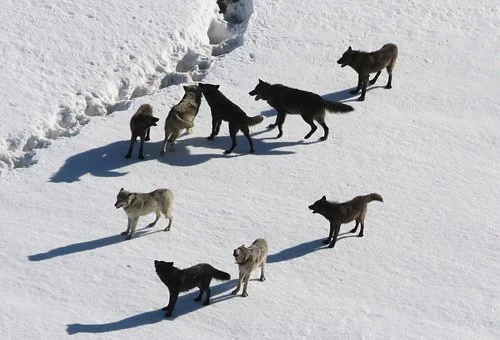Wolves are social animals that live in packs. Understanding wolf packs is essential for understanding wolf behavior and their role in nature. In this article, we will provide an ultimate guide to wolf packs, including their size, formation, communication, hunting strategies, and conservation.
What is a Wolf Pack?
A wolf pack is a social unit of wolves that live, hunt, and travel together. A typical wolf pack is comprised of a breeding pair, their offspring, and occasionally, other wolves that are related to the breeding pair.
Within a wolf pack, there is a hierarchy that determines the roles and responsibilities of each member. The alpha pair, or the breeding pair, are the leaders of the pack. They are responsible for making decisions for the pack and maintaining order within the group.
The other wolves in the pack are ranked according to their position in the hierarchy, with the lowest-ranked wolves having the least power and responsibility.
How Many Wolves are in a Pack?
The size of a wolf pack can vary depending on a variety of factors, including the availability of prey, the size of the wolf’s territory, and the number of wolves in the area.
The average size of a wolf pack is typically between 4 to 7 wolves. However, some packs can have up to 30 or more wolves, while others may consist of just a single wolf.
The largest known wolf pack was a pack of 37 wolves living in Yellowstone National Park in the 1940s. The smallest known wolf pack was a pair of wolves living in Canada’s Prince Edward Island National Park.
Formation and Dissolution of Wolf Packs
Wolf packs are typically formed through the bonding of a mated pair. As the pair breeds, their offspring will stay with them and eventually form a pack. However, not all offspring will stay in the pack. Young wolves may leave the pack to find a mate and form their own pack.
Wolf packs may also dissolve or break apart for a variety of reasons, including the death of the alpha pair, a lack of food, or changes in the pack’s territory. Dispersal, or the process of young wolves leaving their pack to find a mate, is a natural process that helps maintain genetic diversity within the wolf population.
Communication within Wolf Packs
Wolves communicate with each other through a variety of methods, including body language, vocalizations, and scent marking. Body language is an essential form of communication within a wolf pack, with wolves using a variety of gestures and postures to convey information.
Vocalizations, such as howls, barks, and growls, are also used to communicate within a wolf pack. Wolves use howls to communicate over long distances and to signal the location of prey.
Hunting Strategies of Wolf Packs
Wolf packs are skilled hunters that employ a variety of hunting strategies depending on their prey and their environment. They may hunt in packs or individually, depending on the size of the prey and the pack’s size.
When hunting large prey, such as elk or moose, wolf packs will work together to take down the animal. Cooperation and teamwork are essential in wolf pack hunting. Wolves will often take turns chasing the prey and working together to tire it out before making the kill.
Conservation of Wolf Packs
Wolf packs face numerous threats to their survival, including habitat loss, hunting, and human disturbance. Efforts are being made to protect and conserve wolf packs through conservation programs, such as habitat restoration and the reintroduction of wolves into areas where they have been extirpated.
Wolf packs play an essential role in maintaining healthy ecosystems by controlling the populations of their prey and providing food for scavengers such as eagles and ravens.
Related: Do Wolves Mate for Life
Conclusion
Understanding wolf packs is crucial for understanding wolves’ behavior and their role in nature. Their complex social structure and communication methods make them fascinating animals to study, and their conservation is essential for maintaining a healthy ecosystem.
